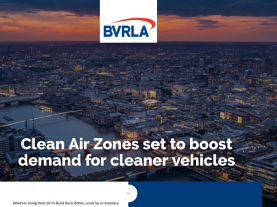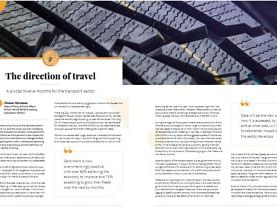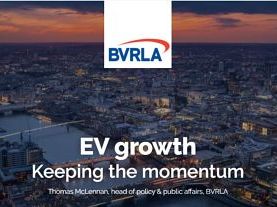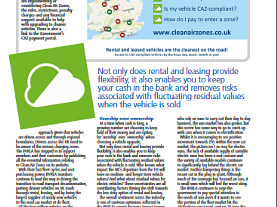Writing for EV Fleet World magazine, Catherine Bowen, the BVRLA's Senior Policy Advisor talks about new research that shows why further work on public charging network is essential
n a dynamic, ever-changing puzzle, EV charging infrastructure is still the biggest missing piece. The one-size-fits-all approach that has been adopted historically is now impeding the fleet sector’s journey towards decarbonisation.
These were the main outtakes from the latest edition of the BVRLA’s annual Road to Zero Report Card. While the overall outlook for the fleet sector is ‘Accelerating’ – an upgrade from the ‘Brakes on’ score issued in 2021 – the score for infrastructure has gone backwards, with the BVRLA urging local authorities to work with us to develop comprehensive, fleet-friendly strategies.
The Road to Zero Report Card is an annual snapshot of the UK’s progress towards a sustainable future, considering demand, supply and infrastructure for zero-emission cars, vans and trucks respectively.
Contributors for 2022 painted a positive picture of demand for electric cars and vans. Interest in making the transition to EVs is high, buoyed by fiscal incentives and momentum gathering on the move to ‘go green’. For cars, low company car Benefit-in-Kind tax rates are driving EV adoption. More certainty on future rates is essential and something that the BVRLA is pushing for as part of the #SeeTheBenefit campaign.
While vans don’t benefit from the same tax structure, the continuation of the Plug-in Van Grant is playing an undeniable role in making the new range of e-vans coming to market affordable and allowing fleet operators to balance the costs.
As supply bottlenecks recede and these high levels of demand begin to be met, the rollout of more suitable, more considered infrastructure will need to accelerate.
The sheer number of charge points continues to grow rapidly and we welcome the huge sums being invested in this area. More thought is required into how that investment is best spent. It is not simply a numbers game of getting more charge points in the ground. This infrastructure needs to suit a wide variety of different road users.
Fleet operators are ready to lead the charge but are being left with one hand tied behind their back. The Government is beginning to listen to these concerns and we will continue to push the issue until authorities across the country are building infrastructure strategies that better meet fleet needs.




